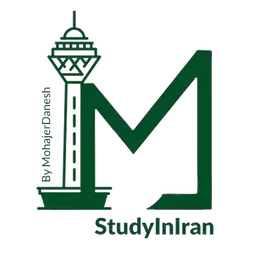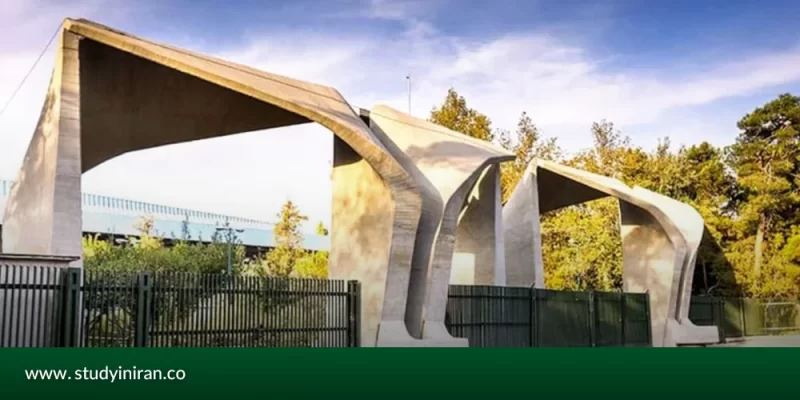- What Determines the Cost of Studying in Iran?
- Tuition Fees of Iranian Universities for International Students
- Public University Tuition for International Students
- Islamic Azad University Tuition for International Students
- Medical University Tuition for International Students
- Key Points on University Tuition in Iran
- Living Costs in Iran for International Students
- Healthcare and Health Insurance for International Students
- Cost of Books and Study Materials
- Scholarships in Iran for International Students
- Part-Time Work for International Students in Iran
- Paying Tuition In Iran
- Final Note
- Frequently Asked Questions
Iran offers a range of study options—public universities, private institutions, and self-funded campuses with tuition varying by program and institution. Public universities charge reduced fees for Iranian citizens, while rates for international students depend on the field of study and degree level.
Compared to many countries, tuition and living costs in Iran are low. Affordable housing, food, and transportation make it an appealing choice for students seeking value without sacrificing quality.
Knowing the breakdown of tuition, living expenses, and extras like books, housing, and health insurance will help you plan your budget with confidence.
What Determines the Cost of Studying in Iran?

Tuition and living costs in Iran can vary widely. Key factors include:
1. Nationality
International students typically pay more than Iranian citizens.
2. Level of Study
Master’s and PhD programs are generally more expensive than undergraduate degrees.
3. Program
Medicine, dentistry, and pharmacy often have higher fees due to specialized facilities and training.
4. Institution Type
Public universities cost less than private or international branch campuses.
5. City
Big cities like Tehran tend to have higher tuition and living expenses than smaller towns.
Tuition Fees of Iranian Universities for International Students
In Iran, tuition for international students generally falls into two categories: fixed fees and variable fees.
Fixed fees
A set amount charged each semester, remaining the same from enrollment through graduation. This covers the core cost of instruction.
Variable fees
Costs that depend on the program, type of course, and number of credits taken. Specialized courses are usually more expensive than general ones, and lab-based or practical classes cost more than theory based courses due to equipment and facility use.
Public University Tuition for International Students
International students enrolled in Iran’s public universities are required to pay tuition, even with a student visa and official admission letter. Rates vary by institution, so the most accurate information comes directly from the university or its website.
As a general guide, minimum tuition per semester is:
- Undergraduate: USD 114–136
- Master’s: USD 171–193
- PhD: USD 257–285
Islamic Azad University Tuition for International Students
International students can also study at Islamic Azad University, which is often more affordable than self-funded campuses. Approximate minimum tuition per semester:
- Undergraduate: USD 226
- Master’s: USD 100
- PhD: USD 309
However, in popular fields such as medicine, tuition fees at Islamic Azad University can be higher, while non-medical fields are usually more affordable. Therefore, the choice of university and field of study should be based on the student’s academic goals and personal interests.

Medical University Tuition for International Students
Medical programs in Iran are typically more expensive than other fields, and international students should budget accordingly. Minimum tuition per semester:
- General Medicine / Undergraduate: USD 200–270
- Professional Doctorate: USD 257
Actual fees vary by university and program, so it’s best to confirm the exact amount on the institution’s official website.
Key Points on University Tuition in Iran
- Annual Increases – Tuition typically rises by 10–15% each year. Updated rates are published annually on university websites.
- Change of Citizenship – International students who obtain Iranian citizenship during their studies are exempt from tuition at public universities. However, this does not apply to evening programs or non-public institutions such as Payam Noor University, the University of Applied Science and Technology, private colleges, or self-funded campuses—tuition is still required to receive a degree.
Living Costs in Iran for International Students
When planning your studies in Iran, remember to factor in living expenses alongside tuition. On average, you’ll need about USD 3,600 for a 9-month academic year (two semesters plus the Nowruz break). For a full year, budget at least USD 4,500. These estimates cover housing, food, books, transportation, leisure, and other essentials. Travel to and from Iran at the start and end of the academic year is not included.
Estimated Monthly Costs
Housing
- Dormitory in Tehran: ~USD 70/month
- Dormitory in other cities: ~USD 50/month
Transportation
- Bus/metro single ticket: USD 0.17–0.70
- Monthly pass: USD 1–5
- Taxi: USD 0.20–0.62 per km
- Gasoline: USD 0.60–0.83 per liter
Leisure
- Gym membership: USD 9.50–40/month
- Cinema ticket: USD 1–2
Clothing
- Jeans: USD 10–100
- Sports shoes: USD 60–200
- Leather formal shoes: USD 35–120
Tips for Managing Expenses
- Track your spending and stick to a budget
- Share accommodation with a roommate
- Cook at home instead of eating out
- Use public transportation rather than taxis or private cars
Healthcare and Health Insurance for International Students
International students in Iran can access student health insurance for a modest annual fee (up to USD 100). In many cases, this insurance can also cover family members.
Iran’s Healthcare System
- Public Sector: Affordable and widely accessible, offering general medicine, internal medicine, surgery, and emergency services at lower costs.
- Private Sector: Faster service and broader specialist options, but at higher prices.
Public Sector
Public facilities such as hospitals and clinics provide essential care at reduced rates for all residents, including international students.
Private Sector
Private facilities offer greater comfort, shorter wait times, and more specialized services. Students can choose either based on their needs and budget.
University Support
Many Iranian universities arrange health insurance for international students and have agreements with local healthcare providers to reduce costs. By combining insurance, public services, and university resources, students can access quality care at an affordable price.

Cost of Books and Study Materials
Expenses vary by field and may include:
- Books and course packs
- Equipment such as calculators or laptops
- Costs for research trips or fieldwork
Ways to Reduce Costs
- Use university libraries and IT facilities
- Apply for financial aid or research grants, especially at the postgraduate level
- Budget study materials as part of overall living costs (approx. USD 3,600 for nine months)
Scholarships in Iran for International Students
Iran offers a variety of scholarships for international students, managed by the Ministry of Science, Research and Technology and the Ministry of Health and Medical Education.
Application Process
- Initial review by the International Student Scholarship Council
- Nomination to the chosen university by the Ministry of Science or Ministry of Health
- Submission of documents and follow-up through the International Students Office
Required Documents
- Recommendation letter from the Ministry of Science or Ministry of Health
- Academic transcripts and certificates verified by the Iranian embassy
- Scanned passport
- Biometric passport photo
Eligibility & Benefits
- Age limits: Undergraduate – 22 years; Master’s – 26 years; PhD – 31 years
- Benefits: Tuition waiver, single-student dormitory accommodation, and health insurance
- Not covered: Travel and airfare costs
Part-Time Work for International Students in Iran
International students in Iran are generally allowed to work up to 20 hours per week. While earnings may not cover tuition, they can help with everyday expenses such as food and transportation.
Graduate students often have additional opportunities to work as teaching or research assistants, which can provide both income and valuable academic experience.
Paying Tuition In Iran
- Tuition is set In euros and paid in rials at the Central Bank exchange rate.
- 50% of the fixed semester fee is due at registration.
- Your total program cost is locked at the rate from your year of admission.
- Scholarship students pay standard tuition if they go beyond the funded study period.
- Housing and other campus services are billed separately.
- Dorm rooms are prioritized for students new to living in Iran.
Final Note
With low tuition fees and affordable living costs, Iran offers strong value for international students. Actual expenses vary by university, program, and degree level, so careful financial planning from the start is essential. Scholarships and academic support can further reduce costs and make the path to graduation smoother.
If you’re considering studying in Iran, Study in Iran can guide you in choosing the right university, understanding tuition, and managing your budget—helping you make the best decision for your goals and circumstances.
Frequently Asked Questions
No. While Iranian citizens often pay little or no tuition at public universities, international students must pay fees, which vary by program and degree level.
At public universities, tuition typically ranges from USD 114 to USD 285 per semester. Fees are higher at private and non-profit institutions, and medical programs cost more than most other fields.
Yes. Private, non-profit, Payam Noor, Applied Science, and Islamic Azad universities generally charge more than public institutions. Self-funded campuses have the highest fees.
No. Tuition usually increases by 10–15% each year. Updated rates are published on university websites.
Yes. The Ministry of Science, the Ministry of Health, and some universities and institutions offer scholarships that may include tuition waivers, housing, and health insurance.
Around USD 3,600 for a 9-month academic year, covering housing, food, transportation, books, and other daily expenses.
Yes. They may work up to 20 hours per week. Income from part-time work usually helps cover daily expenses but not tuition.
No .public university tuition is waived. However, students in evening programs, Payam Noor, or self-funded campuses must still pay fees.





